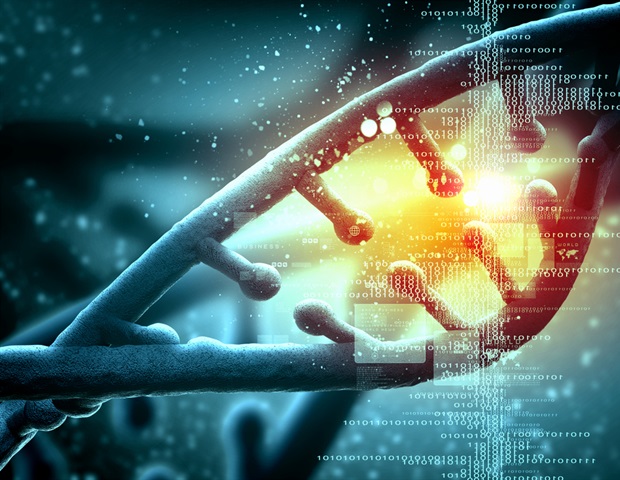In a recent study posted to the bioRxiv* preprint server, researchers introduced a phenotypic screening assay for identifying compounds with severe acute respiratory syndrome coronavirus 2 (SARS-CoV-2) inhibition potential based on caspase 3/7 activation.
Several types of assays have been developed for the detection of SARS-CoV-2 variants, including antibody-based assays for SARS-CoV-2 antigen detection and genetically modified assays; however, the assays have several drawbacks, such as manual handling requirements or a narrow range of detection. Therefore, robust and broad yet simple to perform cell culture assays are required to identify anti-SARS-CoV-2 drugs.
About the study
In the present study, researchers developed a high-throughput SARS-CoV-2 phenotypic screening assay for identifying anti-SARS-CoV-2 compounds based on the activation of caspase 3/7.
The human colon adenocarcinoma (Caco-2) cell line Caco-2-F03 was used for the cell culture experiments. Additionally, Caco-2 cells were obtained from several sources and designated as Caco-2A, -2B, and -2C to discriminate the authors’ original Caco-2 cell line (Caco-2-F03) from the others. The team compared Caco-2F03 to other cell culture models that could be used for identifying potential anti-SARS-CoV-2 drugs.
The susceptibility of Calu-3 (human lung carcinoma cell line), Caco-2-F03, A549-ACE2 (angiotensin-converting enzyme 2) and Vero cells to SARS-CoV-2 strains such as G614, D614, Alpha, Beta, and Delta were compared and confirmed by S immunostaining. Further, caspase activity in the Caco-2-F03 cell line infected with different SARS-CoV-2 isolates was assessed at 24- and 48 hours post-infection (hpi).
The kinase inhibitor library comprising 1796 kinase inhibitors was screened for drug compounds that decreased SARS-CoV-2-induced caspase activation by >90%, including known and potential drugs such as dual specificity protein kinase (CLK-1), phosphoglycerate dehydrogenase (PHGDH), and colony-stimulating factor 1 receptors (CSFR) inhibitors. Remdesivir (10 µM) was used as a positive control. The team also investigated if combined therapy of NCT-503 and 2DG could further enhance anti-SARS-CoV-2 effects compared to single drug therapy.
Caspase 3/7 activity and SARS-CoV-2 S staining by different drug candidates were compared to those of drugs with known anti-SARS-CoV-2 efficacy such as remdesivir, EIDD-1931, ribavirin, nirmatrelvir, and nafamostat using G614-infected Caco-2-F03 cells. The validity of caspase 3/7 assay results was confirmed by comparing anti-SARS-CoV-2 nucleocapsid (N) protein titers and Western Blot analysis.
Air-liquid interface (ALI) cultures of bronchial epithelial (HBE) cells were examined for cellular disruption during SARS-CoV-2 infection by transepithelial electrical resistance (TEER) and SARS-CoV-2 cytotoxicity was assessed based on lactic dehydrogenase (LDH) release. SARS-CoV-2 genomic RNA levels were assessed based on copy numbers detected by polymerase chain reaction (PCR).
Results
Caco-2-F03 demonstrated the best performance since it contained a stable phenotype susceptible to SARS-CoV-2 [indicated by high SARS-CoV-2 S levels and cytopathic effect (CPE) formation] and did not produce false-positive hits due to drug-induced phospholipidosis. Caco-2-F03 cells remained SARS-CoV-2-permissive for 30 passages with high levels of cellular SARS-CoV, SARS-CoV-2 receptor ACE2 and transmembrane serine protease 2 (TMPRSS2).
Caspase-3/7 showed six-fold to eight-fold higher activity compared to caspase-8 and 9, indicating greater robustness therefore, caspase 3/7 detection was chosen for the screening. Caco-2-F03 cell infection with different SARS-CoV-2 isolates effectively activated caspase 3/7, reflected by SARS-CoV-2 S and RNA levels. Caspase 3/7 activity enabled monitoring of SARS-CoV-2 replication in cell lines such as Vero cells and replication of human coronaviruses (hCoVs) such as the Middle East Respiratory syndrome CoV (MERS-CoV), HCoV-229E and SARS-CoV in CaCo-2-F03 cells.
Further, SARS-CoV-2-induced caspase 3/7 activation and CPE were observed in human pluripotent cardiomyocytes (CMS) and hepatocytes. Caspase 3/7 enabled the evaluation of neutralizing antibody (nAb) titers in sera of seven donors obtained 14 days after the second messenger RNA (mRNA)-1273 vaccination. Greater G614 neutralization was observed than Alpha and Gamma neutralization and the remdesivir-resistant strain demonstrated enhanced sensitivity to ribavirin and EIDD-1931. Gly671Ser substitution in the RNA polymerase probably mediated remdesivir resistance.
In the screening, 81 compounds with anti-SARS-CoV-2 activity were identified with the most hits by CaMK (calmodulin-dependent protein kinase), mTOR (mammalian target of rapamycin), ULK (unc-51 like autophagy activating kinase 1), CLK-1, TOPK (T-LAK cell-originated protein kinase), CSF-1R, and PAK (p21-activated kinases). NCT-503 (PHGDH inhibitor) inhibited Delta- and Omicron-induced caspase 3/7 activation and also inhibited SARS-CoV-2 replication in ALI cultures and the activity of NCT-503 increased on combining with the 2-deoxy-D-glucose (2DG, a hexokinase 2 inhibitor).
Overall, the study findings showed that caspase 3/7 activation by different SARS-CoV-2 variants (including remdesivir-resistant strains and other hCoVs) could be used as a simple phenotypic high-throughput screening platform for identifying anti-SARS-CoV-2 drug candidates with a broad range of cell culture models, independent of CPE.
*Important notice
bioRxiv publishes preliminary scientific reports that are not peer-reviewed and, therefore, should not be regarded as conclusive, guide clinical practice/health-related behavior, or treated as established information.







